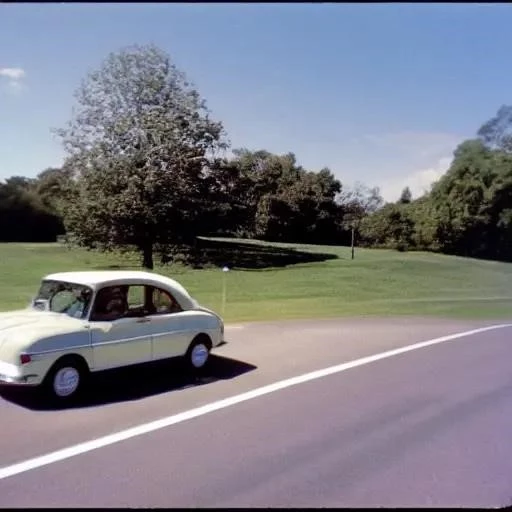In the quiet moments after parking, a driver expects their vehicle to remain precisely where it was left. Yet, the unsettling scenario of a car rolls in park transmission on incline – a vehicle unexpectedly lurching from its seemingly secure position – has long been a subtle yet significant concern for motorists worldwide. This disquieting phenomenon, often leading to property damage or even serious injury, has spurred an incredible wave of innovation within the automotive industry. Far from being an insurmountable challenge, this issue is now being comprehensively addressed by brilliant engineering minds, paving the way for a remarkably safer, more secure future for every parked automobile.
For decades, the primary defense against such rollaways rested largely on the mechanical parking pawl within the transmission and the driver’s diligent application of the parking brake. However, the complexities of physics on varying inclines, coupled with potential wear and tear or human error, sometimes created conditions where these traditional safeguards proved insufficient. The sheer force exerted on a vehicle parked on a steep gradient can be immense, testing the limits of even robust systems. Understanding these forces and potential points of failure has become the bedrock upon which a new generation of preventive technologies is being built, transforming how we perceive and achieve parking safety.
Key Elements of Advanced Parking Safety & Prevention
| Aspect | Description | Engineering Solutions & Best Practices |
|---|---|---|
| Primary Cause: Parking Pawl Failure/Stress | A small metal pin in the transmission designed to lock the output shaft. Can be overwhelmed by excessive force on steep inclines or if the vehicle is parked without the parking brake engaged. | Reinforced pawl designs, advanced metallurgy, automatic parking brake engagement (P-mode), electronic parking brakes (EPB) acting on all four wheels. |
| Contributing Factor: Driver Error | Forgetting to engage the parking brake, not turning wheels toward the curb (if applicable), or not ensuring the vehicle is fully in ‘Park’ before exiting. | Driver assistance systems (e.g., visual/audible warnings for not engaging EPB), automatic transmission shifting to ‘Park’ upon engine shutdown, smart vehicle exit procedures. |
| Environmental Challenge: Steep Inclines | The greater the angle of the slope, the higher the gravitational force attempting to roll the vehicle downhill. | Hill Hold Assist, advanced traction control systems, integrated electronic stability control (ESC) that can detect unintended movement and apply brakes. |
| System Redundancy & Monitoring | Lack of multiple independent systems to prevent rollaway, or insufficient monitoring of parking status. | Redundant braking systems, sensors detecting vehicle inclination and unintended movement, AI-driven predictive safety algorithms, over-the-air updates for software enhancements. |
| External Resource for Parking Safety Guidelines | Official guidelines for safe parking practices. | NHTSA (National Highway Traffic Safety Administration) |
The automotive world is currently witnessing a profound transformation, moving beyond mere mechanical reliance to embrace sophisticated electronic and intelligent systems. Modern vehicles are increasingly equipped with Electronic Parking Brakes (EPBs), which engage with a simple button press and often automatically activate when the transmission is shifted into Park or the engine is turned off. These systems, providing significantly more holding power than their mechanical predecessors, offer a robust and reliable safeguard. Moreover, innovations like Hill Hold Assist momentarily prevent a vehicle from rolling backward on an incline, granting the driver precious seconds to transition their foot from the brake to the accelerator without anxiety.
Looking ahead, the integration of Artificial Intelligence and advanced sensor technology promises to virtually eliminate rollaway incidents. Imagine a vehicle that, by integrating insights from AI, constantly monitors its surroundings, its inclination, and the engagement status of its braking systems. Autonomous parking features, already becoming prevalent, are being refined to ensure optimal parking procedures, including precise wheel positioning and automatic EPB activation, regardless of the terrain. This proactive approach, coupled with enhanced driver warning systems that detect potential rollaway risks before they materialize, is forging an incredibly effective shield against the unexpected. Leading automotive engineers are passionately pursuing redundant safety mechanisms, ensuring that even in the unlikely event of a primary system failure, secondary protocols are ready to intervene, keeping the vehicle firmly anchored.
Ultimately, the era of fearing a car rolls in park transmission on incline is swiftly becoming a relic of the past. Through relentless innovation, meticulous engineering, and a forward-looking commitment to driver and pedestrian safety, the automotive industry is not merely fixing a problem; it is redefining the very essence of parking security. This optimistic trajectory, driven by technological prowess and a deep understanding of physics, assures us of a future where every parked car, whether on a bustling city street or a challenging mountain pass, will remain steadfast and secure, awaiting its next journey with unwavering stability.






